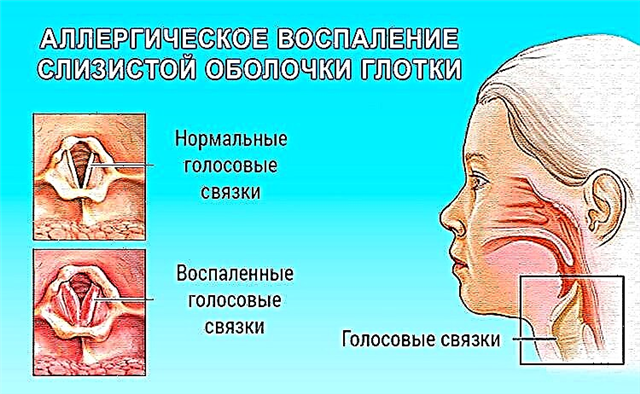Nasal lavage is a therapeutic procedure that eliminates pathogens and pathogenic mucus in the nasal cavity. For carrying out therapeutic manipulations, a number of functional solutions are used - from isotonic water to saline solutions. Regular irrigation of the nasopharynx contributes to the destruction of pathogenic flora in the ENT organs, which prevents the development of complications.
 How to make a nasal rinse solution? The principles of preparation of a means for irrigation of the nasopharynx depend on the degree of inflammation of the mucous membrane and the type of pathology. To relieve the symptoms of acute rhinitis, saline solutions based on sodium chloride or sea salt are used. To eliminate the clinical manifestations of bacterial sinusitis and sinusitis, you can use iodized water or a solution with "Furacilin".
How to make a nasal rinse solution? The principles of preparation of a means for irrigation of the nasopharynx depend on the degree of inflammation of the mucous membrane and the type of pathology. To relieve the symptoms of acute rhinitis, saline solutions based on sodium chloride or sea salt are used. To eliminate the clinical manifestations of bacterial sinusitis and sinusitis, you can use iodized water or a solution with "Furacilin".
The effectiveness of the procedure
Nasal lavage (nasal lavage) is a therapeutic and prophylactic procedure involving irrigation of the nasopharyngeal mucosa with antiseptic and anti-inflammatory drugs. In the course of treatment, allergens, pathogens, pathological mucus and dust particles are removed from the surface of the ciliated epithelium. As a result, swelling and inflammation of the tissues decreases, due to which the lumen in the nasal passages increases and breathing is facilitated.
Irrigation of the nasopharynx helps to remove mucus from the hairs in the ciliated epithelium, which are responsible for the drainage of the nasal passages.
The restoration of the functions of the mucous membrane normalizes the process of evacuation of liquid secretions, thereby eliminating congestion. Systematic irrigation of the nasal cavity increases tissue reactivity, which leads to the strengthening of local immunity.
Failure to follow the technique of rinsing the nose can lead to stagnation of fluid in the paranasal sinuses, which is fraught with the development of sinusitis.
Salt solution
How to prepare a nasal rinse solution? For the prevention and treatment of acute rhinitis, a classic drug based on sodium chloride (table salt) is used. It has a pronounced anti-edematous and antiseptic effect, which contributes to the destruction of pathogens in the ENT organs.
For the preparation of hypertonic fluid, you must:
- heat 250 ml of water to 70 degrees;
- mix water with 5 g of table salt;
- add 1-2 drops of iodine to the liquid.
Important! To flush the nasopharynx, the liquid should be cooled to 38 degrees.
 For the prevention of colds, the salt concentration must be halved. To accelerate the regression of inflammation in the nasopharyngeal mucosa, the procedure must be performed at least 4 times a day for a week. In the presence of mechanical damage in the ciliated epithelium, it is undesirable to use a saline solution for nasal irrigation.
For the prevention of colds, the salt concentration must be halved. To accelerate the regression of inflammation in the nasopharyngeal mucosa, the procedure must be performed at least 4 times a day for a week. In the presence of mechanical damage in the ciliated epithelium, it is undesirable to use a saline solution for nasal irrigation.
Sea salt solution
Sea salt contains a large amount of trace elements and minerals that accelerate regeneration processes. Due to its antimicrobial and antiphlogistic properties, sea water is used as part of antibacterial therapy for the treatment of sinusitis and sinusitis. Irrigation of the nasal cavity with a concentrated preparation stimulates local immunity, which in the long term prevents the recurrence of inflammatory processes.
To prepare a solution for rinsing the nose, you should:
- boil 500 ml of water;
- dissolve 2 tsp in liquid. sea salt;
- cool the solution to 37-38 degrees.
If coarse-grained salt is used, the seawater should be filtered before the treatment. The penetration of salt particles into the nasal passages can provoke adverse reactions. Inflammation and swelling of the mucous membrane will reduce the patency of the passages, which will make nasal breathing difficult.
For therapeutic purposes, you can use only pure salt without fragrances, essential oils and pigments.
For the treatment of children, it is desirable to use less concentrated sea water, which is due to the hypersensitivity of the mucous membrane. To do this, ½ liter of boiled water must be mixed with 1 teaspoon of sea salt. After irrigation, the nasal mucosa should be lubricated with peach oil to prevent it from drying out.
Solution with "Furacilin"
"Furacilin" is an antibacterial drug, the active ingredients of which are active against gram-negative and some gram-positive microbes. It is used as part of antibacterial therapy for the treatment of purulent-inflammatory processes in the mucous membranes of the ENT organs. The antiseptic sponge included in the medicine with gentamicin disrupts the reproductive function of pathogens, which helps to reduce the number of bacteria in the foci of inflammation.
gentamicin disrupts the reproductive function of pathogens, which helps to reduce the number of bacteria in the foci of inflammation.
Important! Do not use the drug for people suffering from allergic dermatoses.
To prepare a medicinal solution for sinusitis and sinusitis, you should:
- grind 1 tablet of "Furacilin" into powder;
- pour the medicine with 150 ml of boiled water;
- warm the solution to room temperature.
"Furacilin" can be used for nasopharyngeal irrigation only on the recommendation of a doctor. Abuse of the drug leads to a decrease in local immunity, which is fraught with the development of fungal and viral flora in the foci of inflammation.
Contraindications
After irrigation of the nasopharynx, you cannot go outside for 1.5-2 hours. Even if the technique of washing the nasopharynx is followed, the medicinal solution may stagnate in the paranasal sinuses. Going outside increases the risk of local hypothermia, which can provoke the development of sinusitis, sinusitis, etc.
Concentrated saline solutions based on sodium chloride and sea salt cannot be used when:
- salpingootitis;
- otitis media;
- nosebleeds;
- increased blood clotting;
- obstruction of the nasal passages;
- mechanical damage to the mucous membrane;
- neoplasms in the ciliated epithelium.
It should be noted that a therapeutic procedure cannot replace a medication course of treatment.
Rhinitis is only a symptom that signals the development of a bacterial or viral infection in the ENT organs. Only a qualified specialist can determine the etiological factors of the development of the common cold.



